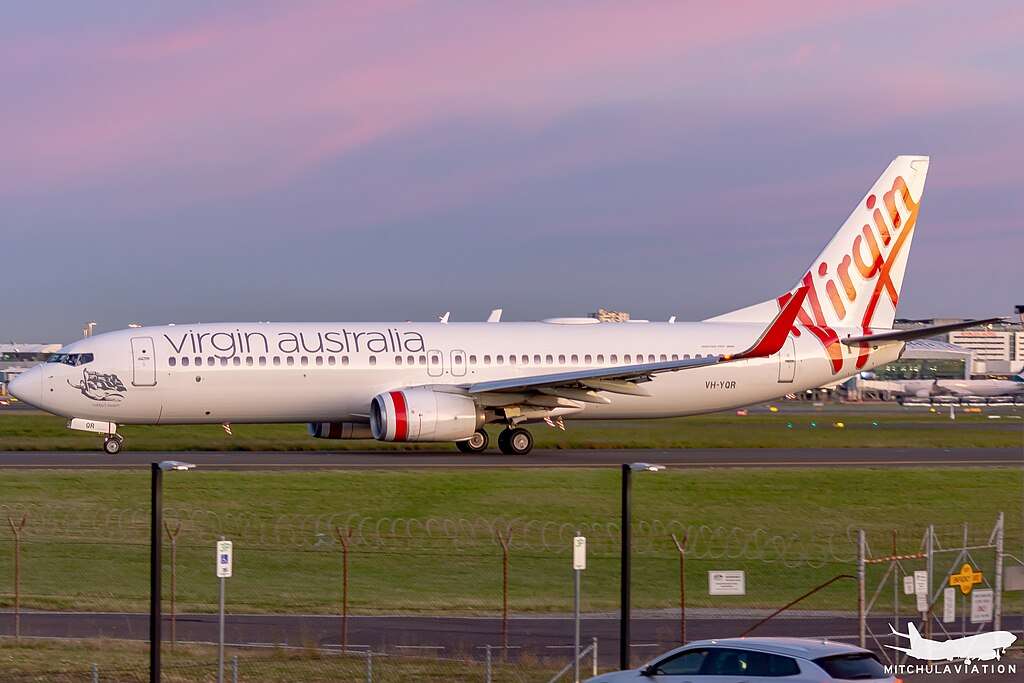Recent events surrounding a hard landing incident involving a Virgin Australia 737 at Sydney Airport have prompted significant actions and introspection within the aviation industry.
Safety actions have been taken by the operator Virgin Australia and a type rating training provider following a hard landing involving a Boeing 737 in March this year, an Australian Transport Safety Bureau (ATSB) final report reveals.
The Landing Incident
On the morning of March 10, 2023, a Virgin Australia 737, with 179 passengers and 6 crew members, experienced a hard landing at Sydney Airport.
The aircraft involved was a Boeing 737-8FE, registered VH-YQR and operated by Virgin Australia as flight number VA916 on a scheduled air transport flight, operating from Brisbane, Queensland to Sydney, New South Wales.
Although the aircraft sustained no damage, and there were no reported injuries, the incident sparked a thorough investigation by the Australian Transport Safety Bureau (ATSB).
Root Causes Revealed
The ATSB’s final report unveiled critical details surrounding the incident. The first officer had flared the aircraft later than usual during the final approach, coupled with the throttle not being reduced to idle prior to the initial touchdown. This resulted resulting in the aircraft bouncing approximately 3 feet.
[monsterinsights_popular_posts_inline]

During the bounce, the ground spoilers and speed brakes deployed, resulting in a hard landing of 2.96 G on the second touchdown. This effectively surpassing the defined threshold for hard landings.
Further investigation revealed that the international training provider contracted to Virgin Australia had been instructing pilots to flare the aircraft at a higher altitude than the manufacturer’s recommendation of approximately 20 feet.
This deviation from the manufacturer’s recommendation for the aircraft in question increased the risk of unstable and hard landings.

Insights into Training Practices
The first officer, relatively new to the aircraft type, had completed the type rating with the international training provider.
Despite awareness of the operator’s requirement for a flare at 20 ft, the first officer felt more comfortable with the originally trained altitude of 30 ft.
On the day of the incident at Sydney Airport, flying with a check captain led to a last-minute decision to follow the operator’s procedures, introducing unfamiliarity and uncertainty.
Proactive Measures Implemented
In response to the incident, the training provider and Virgin Australia have taken significant steps to prevent similar occurrences in the future.
The training provider conducted a thorough risk assessment in pilot training, reviewing and amending all relevant courseware.
Virgin Australia, on its part, reviewed all hard landing events since 2017 to identify common trends, increased oversight on external type rating providers, added more simulator sessions to the training regime, and conducted an independent review of its checking and training department.
Summary
The incident underscores the importance of aligning external training providers with the operator’s flight procedures.
The operator has completed the following safety actions:
- reviewed hard landing events from 2017 to identify any commonalities or trends in the events
- increased oversight and focus with the external type rating providers and the Training and Standards team to ensure alignment of training with standard operating procedures
- added Zero Flight Time (ZFT) advanced simulator sessions into the operator’s conversion course (OCC) program (the ZFT occurs approximately halfway through the line training to reconfirm the take-off and landing techniques while also being able to introduce more challenging conditions)
The ATSB found that the training provider, contracted by the operator to conduct Boeing 737 conversion training, was training pilots to initiate the flare at 30 ft; however the flight crew training manual required that the aircraft be flared at approximately 20 ft.
This variation increased the risk of unstable and/or hard landings. A full copy of the ATSB Report can be accessed here.

Click the banner to subscribe to our weekly Emergencies and Incidents newsletter.

Click the photo to join our WhatsApp channel so then you can stay up to date with everything going on in the aviation industry!









